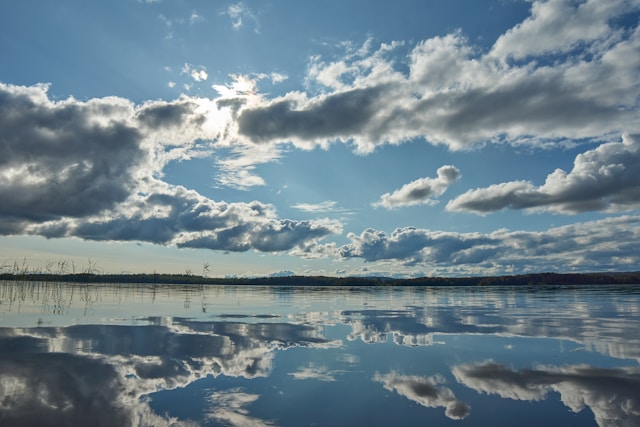Tornadoes are some of the most devastating and awe-inspiring natural phenomena on Earth. These violent storms have attracted a unique breed of individuals known as tornado chasers, who willingly put themselves in harm’s way to study and document these powerful whirlwinds. While their efforts contribute significantly to our understanding of tornadoes, it is important to acknowledge the risks they face. In this article, we delve into the statistics surrounding tornado chaser fatalities, providing insights into their dangerous pursuit.
The Nature of Tornado Chasing
Tornado chasing is a unique and exhilarating pursuit that combines elements of science, adventure, and a deep fascination for severe weather. Tornado chasers are individuals who actively seek out tornadoes with the intent of observing and documenting these powerful atmospheric phenomena. Here are some key aspects that define the nature of tornado chasing.
Research and Study
Tornado chasing is not merely an adrenaline-fueled hobby; it is a serious scientific endeavor. Many tornado chasers are meteorologists, scientists, or researchers who aim to gather valuable data about tornado formation, behavior, and patterns. By studying tornadoes up close, they contribute to the advancement of meteorological knowledge, helping to improve tornado prediction models and enhance our understanding of severe weather systems.
Advanced Tools and Technology
Tornado chasers rely on advanced tools and technology to track and monitor tornadoes. Doppler radar, mobile weather stations, GPS systems, high-definition cameras, and real-time communication devices are some of the essential equipment they utilize. These tools enable chasers to capture valuable meteorological data, document tornadoes visually, and share their observations with the scientific community and the public.
Chasing Vehicles
A crucial aspect of tornado chasing is the use of specialized vehicles equipped to withstand severe weather conditions. Chasing vehicles are typically outfitted with reinforced frames, powerful engines, and weather-resistant features. They are designed to navigate challenging terrain and enable chasers to get as close as possible to tornadoes while maintaining a safe distance.
Meteorological Knowledge and Expertise
Successful tornado chasers possess a deep understanding of meteorology and severe weather patterns. They study atmospheric conditions, such as wind shear, instability, and moisture content, to identify areas where tornadoes are likely to form. This knowledge helps chasers make informed decisions about target areas, increasing their chances of encountering tornadoes.
Safety Precautions
Despite the inherent risks involved, tornado chasers prioritize safety and take precautions to mitigate potential dangers. They closely monitor weather forecasts and severe weather alerts to ensure they are well informed about the conditions they will encounter. Chasers maintain constant situational awareness and actively assess the risks involved in approaching tornadoes. Safety protocols include maintaining a safe distance from the storm, avoiding roads that could become congested with chasers and storm spotters, and seeking shelter when necessary.
Collaboration and Community
The tornado-chasing community is a tight-knit group that values collaboration and information sharing. Chasers often communicate with each other, exchanging real-time observations, forecasts, and safety information. This cooperative spirit helps enhance the overall safety and effectiveness of tornado-chasing efforts.
Public Education and Outreach
Tornado chasers play an important role in public education and outreach. Through their photographs, videos, and firsthand accounts, they raise awareness about the power and potential dangers of tornadoes. They also contribute to the dissemination of accurate information, helping the public better understand tornadoes and the appropriate safety measures to take when severe weather strikes.
Statistics on Tornado Chaser Fatalities
Accurate statistics regarding tornado chaser fatalities can be challenging to obtain, primarily because not all chaser-related deaths are reported as such. Moreover, determining the exact number of individuals who were actively engaged in chasing a tornado at the time of their death can be difficult. However, based on available data and reports, we can glean insights into the risks tornado chasers face.

- The number of tornado chaser fatalities annually. While the number of tornado chaser fatalities fluctuates from year to year, it is important to note that the vast majority of tornado chasers prioritize safety and employ precautions to mitigate risks. Nevertheless, on average, the number of deaths directly associated with tornado chasing is relatively low;
- Causes of tornado chaser fatalities. The causes of tornado chaser fatalities can vary. Some deaths occur due to direct tornado-related impacts, such as being caught in the path of a violent tornado or struck by flying debris. Others are the result of secondary factors, such as traffic accidents while chasing storms or other weather-related hazards, including lightning strikes and flash floods;
- Risk mitigation strategies. Tornado chasers often employ risk mitigation strategies to minimize the chances of injury or death. They stay informed about weather conditions, closely monitor forecasts, and adhere to strict safety protocols. However, the unpredictability and rapidly changing nature of tornadoes can present unforeseen challenges, which sometimes result in tragic outcomes.
Some Data
In general, it is known at least about 15 fatalities that occurred because of tornado chasing until 2019. Here are some examples
- April 26, 1984. Christopher Phillips, a 21-year-old meteorology student from Englewood, NJ, died during a chase in Logan County, OK. While trying to avoid a rabbit, he swerved his car, causing it to roll over into a ditch;
- July 11, 2005. Jeff Wear of Norman, OK, lost his life on Interstate 20 near Kilgore, TX. On his way back from attempting to intercept Hurricane Dennis on the Gulf Coast, he hydroplaned in heavy rain and collided head-on with a flatbed truck;
- June 6, 2009. Fabian Guerra from Chicago died on Interstate 80 in Iowa. He was on his way to Nebraska to meet up with fellow chasers when he swerved to avoid a deer, crossed the median, and crashed into an oncoming tractor-trailer;
- February 4, 2012. Tragically, Andy Gabrielson’s life was cut short in a devastating head-on collision on the Turner Turnpike (I-44) near Sapulpa, Oklahoma. The collision was caused by a drunk driver. Gabrielson, who had been engaged in tornado chasing earlier in Oklahoma, was heading home when the accident occurred;
- May 31, 2013. Tim Samaras, Paul Samaras, and Carl Young, all experienced storm chasers, lost their lives when the El Reno tornado overtook their vehicle on Reuter Road. Additionally, Richard Henderson, an Oklahoma resident observing the storm near his home, was killed. Researchers studying the tornado and its impacts later discovered a fifth fatality likely involving a chaser unknown to the community at the time;
- July 12, 2015. David and Mildred Frank, residents of Pennock, Minnesota, lost their lives when a storm chaser failed to obey a stop sign near the town and crashed into their vehicle. Although the Franks were not chasers themselves, the incident garnered attention as it involved a storm chaser. The chaser survived with minor injuries, faced criminal charges, and received a 90-day suspended jail sentence and one year of probation. The Franks’ family filed a civil suit, resulting in a $100,000 judgment;
- March 28, 2017. Corbin Jaeger, Kelley Williamson, and Randall Yarnall died in a collision near Spur, Texas. The Yarnall/Williamson SUV ran a stop sign and collided with Jaeger’s vehicle. Yarnall and Williamson, who were chasing and live-streaming for The Weather Channel, were on official duty at the time. Jaeger’s family filed a civil lawsuit against The Weather Channel;
- June 20, 2019. Dale Sharpe from Tugun, Australia, died after being struck by a vehicle along Highway 2 near Harper, Kansas. Sharpe’s car became disabled after hitting a deer, and when he exited the vehicle due to smoke from the engine compartment, he was hit by a second car that swerved to avoid the initial accident.
Summing Up
Tornado chasers play a significant role in expanding our understanding of tornadoes, contributing valuable data that aids in meteorological research and public safety efforts. While the pursuit of these storms can be perilous, it is important to note that the number of tornado chaser fatalities remains relatively low in comparison to the number of individuals actively involved in storm chasing. By prioritizing safety and implementing effective risk mitigation strategies, chasers can continue to pursue their passion while minimizing the potential dangers associated with their pursuit.


